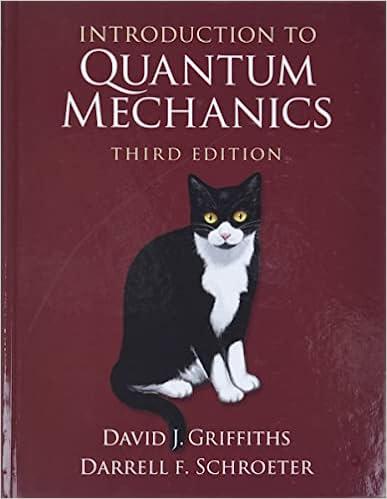(a) Hunds first rule says that, consistent with the Pauli principle, the state with the highest total...
Question:
(a) Hund’s first rule says that, consistent with the Pauli principle, the state with the highest total spin (S) will have the lowest energy. What would this predict in the case of the excited states of helium?
(b) Hund’s second rule says that, for a given spin, the state with the highest total orbital angular momentum (L), consistent with overall antisymmetrization, will have the lowest energy. Why doesn’t carbon have L = 2?
(c) Hund’s third rule says that if a subshell (n,ℓ) is no more than half filled, then the lowest energy level has J = |L - S|; if it is more than half filled, then J = L + S has the lowest energy. Use this to resolve the boron ambiguity in Problem 5.17(b).
(d) Use Hund’s rules, together with the fact that a symmetric spin state must go with an antisymmetric position state (and vice versa) to resolve the carbon and nitrogen ambiguities in Problem 5.17(b).
Problem 5.17(b)
(b) Figure out the corresponding total angular momenta, in the notation of Equation 5.45, for the first four elements. List all the possibilities for boron, carbon, and nitrogen.
Equation 5.45
![]()
Step by Step Answer:

Introduction To Quantum Mechanics
ISBN: 9781107189638
3rd Edition
Authors: David J. Griffiths, Darrell F. Schroeter





